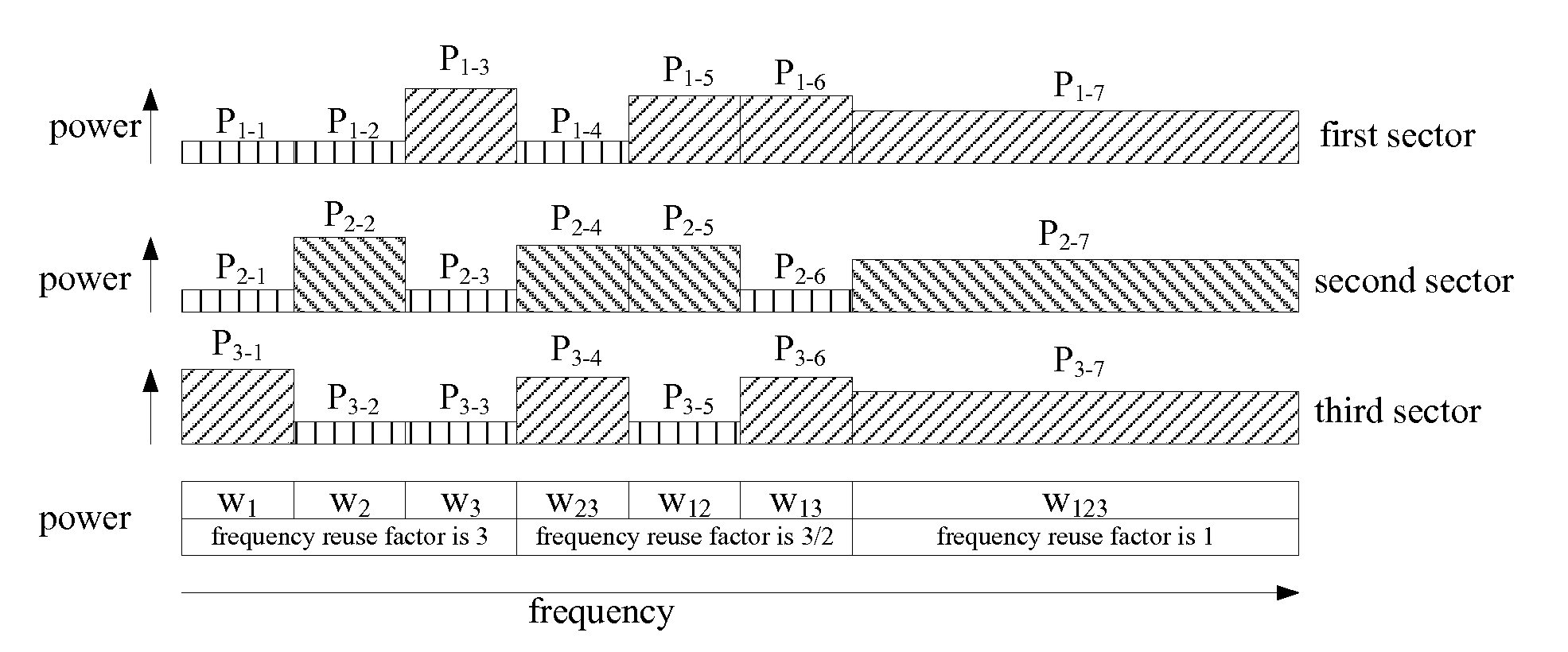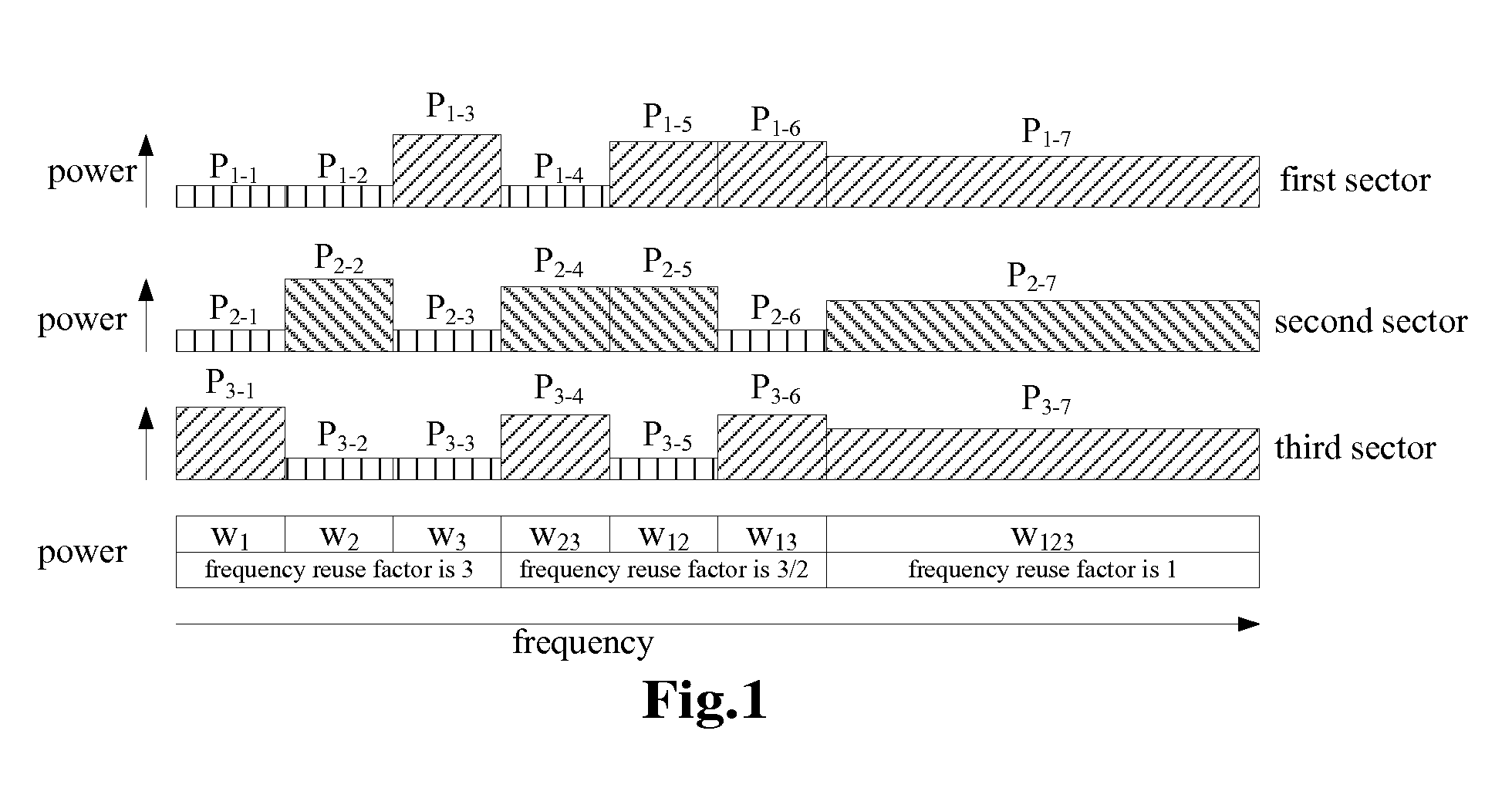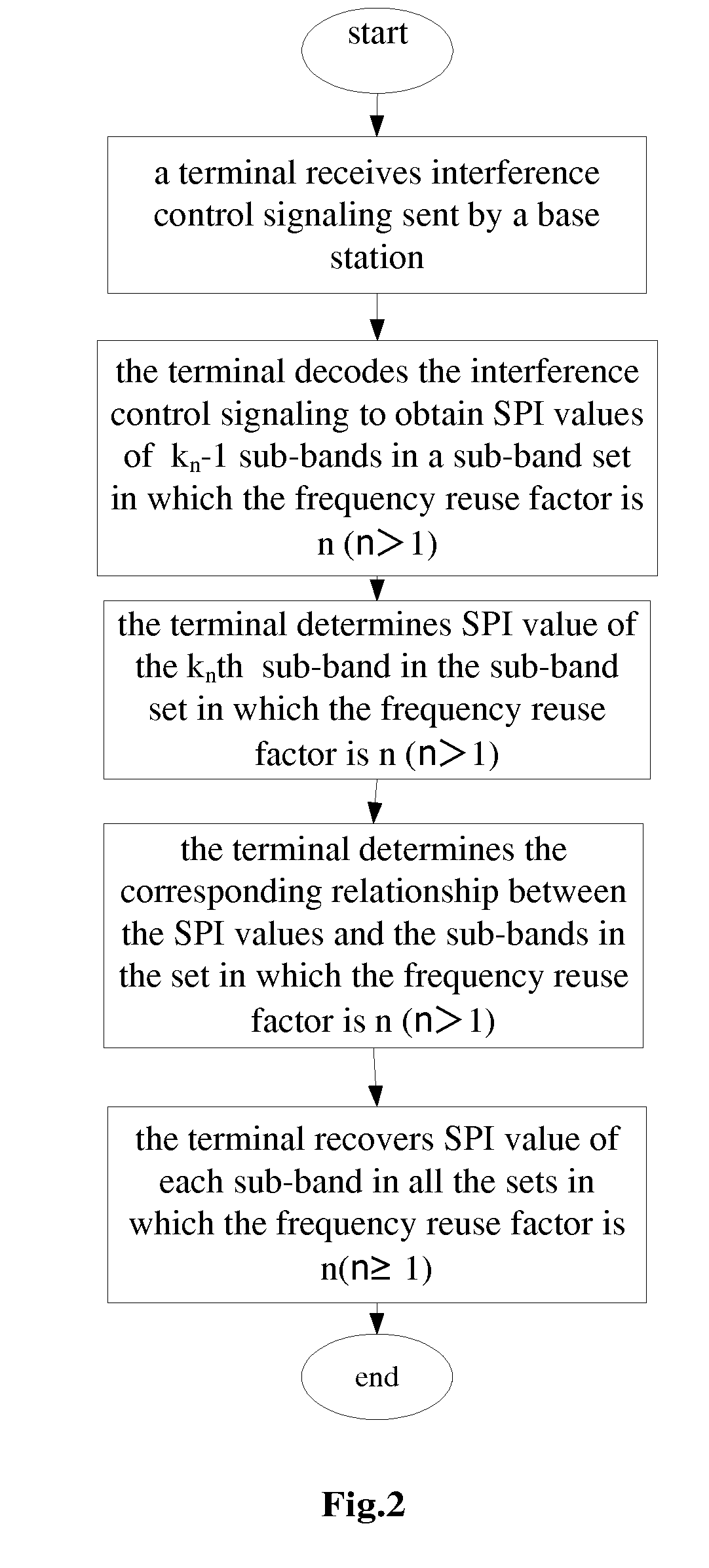Method for transmitting and receiving interference control signaling in wireless communication system
a wireless communication and interference control technology, applied in the field of wireless communication, can solve the problems of increased system overhead and subjection to downlink interference, and achieve the effect of saving system overhead and facilitating terminal analysis of spi valu
- Summary
- Abstract
- Description
- Claims
- Application Information
AI Technical Summary
Benefits of technology
Problems solved by technology
Method used
Image
Examples
embodiment 1
[0075]FIG. 4 is a schematic diagram of an allocation method of frequency resources of adjacent sectors and restriction on transmission power of each sub-band in Embodiment 1 of the present invention. As shown in FIG. 4, the frequency resources are divided into two frequency reuse sets, viz. a first reuse set Reuse1 and a second reuse set Reuse3, wherein [W1, W2, W3] belongs to the second reuse set Reuse3, W4 belongs to the first reuse set Reuse1. The transmission power of [W1, W2, W3, W4] in the first sector is [PHigh, PLow1, PLow2, Preuse1] the transmission power of [W1, W2, W3, W4] in the second sector is [PLow1, PLow2, PHigh, Preuse1] the transmission power of [W1, W2, W3, W4] in the third sector is [PLow1, PLow2, PHigh, Preuse1] and the condition PHigh>Preuse1>PLow1>PLow2 is satisfied. A base station transmits configuration information such as the dividing manner of AFR frequency resource, the allocating manner of sub-band transmission power, the serial numbers of sub-bands, the...
embodiment 2
[0079]FIG. 7 is a schematic diagram of an allocation method of frequency resources of adjacent sectors and restriction on transmission power of each sub-band in Embodiment 2 of the present invention. As shown in FIG. 7, firstly, the frequency resources are divided into two frequency reuse sets, viz. a first reuse set Reuse1 and a second reuse set Reuse3, wherein [W1, W2, W3] belongs to the second reuse set Reuse3, W4 belongs to the first reuse set Reuse1. The transmission power of [W1, W2, W3, W4] in the first sector is [PHigh, PLow, PLow, Preuse1] the transmission power of [W1, W2, W3, W4] in the second sector is [PLow, PHigh, PLow, Preuse1], the transmission power of [W1, W2, W3, W4] in the third sector is [PLow, PLow, PHigh, Preuse1], and the condition PHigh>Preuse1>PLow is satisfied. A base station transmits configuration information such as the dividing manner of AFR frequency resource, the allocating manner of sub-band transmission power, the serial numbers of sub-bands, the c...
embodiment 3
[0083]The present embodiment is described in detail with FIG. 4 as an example. As shown in FIG. 4, the frequency resources are divided into two frequency sets, viz. Frequency Partition#1 (Reuse 3) and Frequency Partition#2 (Reuse 1), wherein, [W1, W2, W3] belongs to Frequency Partition#1, W4 belongs to Frequency Partition#2. The transmission power of [W1, W2, W3, W4] in Sector 1 is [PHigh, PLow1, PLow2, Preuse1] the transmission power of [W1, W2, W3, W4] in Sector 2 is [PLow2, PHigh, PLow1, Preuse1] the transmission power of [W1, W2, W3, W4] in Sector 3 is [PLow1, PLow2, PHigh, Preuse1] and the condition PHigh>Preuse1>PLow1>PLow2 is satisfied. The above basic configuration information is notified to the corresponding base station by the upper-layer network element through air interface and / or Backbone (Backhaul), then the base station transmits the above basic configuration information to the terminal through the corresponding signaling.
[0084]The upper-layer network element notifies...
PUM
 Login to View More
Login to View More Abstract
Description
Claims
Application Information
 Login to View More
Login to View More - R&D
- Intellectual Property
- Life Sciences
- Materials
- Tech Scout
- Unparalleled Data Quality
- Higher Quality Content
- 60% Fewer Hallucinations
Browse by: Latest US Patents, China's latest patents, Technical Efficacy Thesaurus, Application Domain, Technology Topic, Popular Technical Reports.
© 2025 PatSnap. All rights reserved.Legal|Privacy policy|Modern Slavery Act Transparency Statement|Sitemap|About US| Contact US: help@patsnap.com



